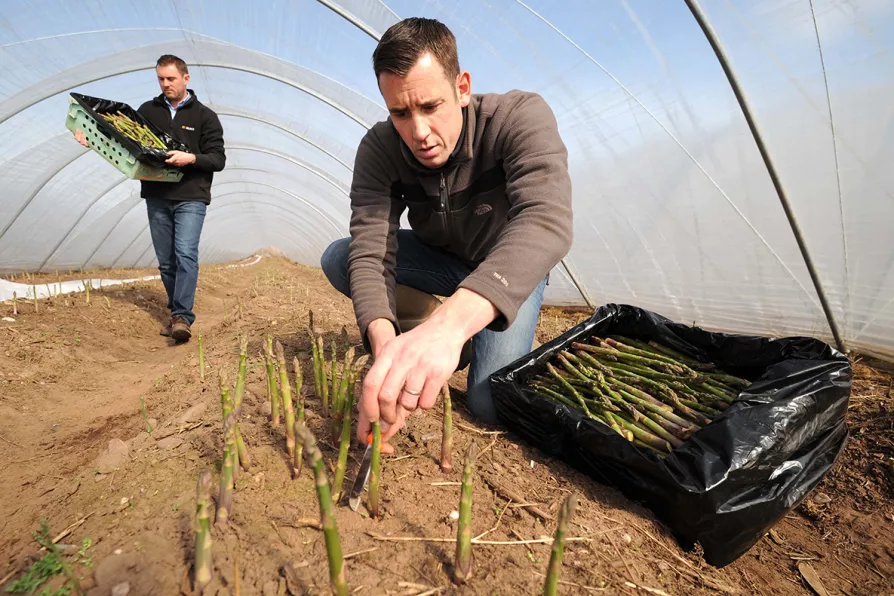Since Ahmad al-Sharaa came to power in Syria, the Damascus government has been given carte blanche to use maximum force against any threat to its continued rule, writes VIJAY PRASHAD

 Simon Hibbs (left) and Paul McGuffie at New Farm Produce Ltd in Lichfield, Staffordshire
Simon Hibbs (left) and Paul McGuffie at New Farm Produce Ltd in Lichfield, Staffordshire
THE best time to plant an asparagus bed is three years ago, the old saying has it, because the wait is about that long before you get a full crop. The good news is that once it starts cropping it should keep going at full strength for at least a decade, and can still be productive 20 years on.
In Britain it is traditional to stop cutting asparagus around June 21, giving the plants the rest of the year to recover their strength ready for next season. You get around six to eight weeks of harvest annually, starting in April, at a time when the garden isn’t producing much else except puddles. I think it’s that, as much as the supermarket price, which makes asparagus seem so luxurious, more so perhaps than anything else on the vegetable patch.
I’ve planted a few asparagus beds over the years, and some have been great successes while others have been equally impressive failures. Unfortunately, the rules don’t always help.

MAT COWARD sings the praises of the Giant Winter’s full-depth, earthy and ferrous flavour perfect for rich meals in the dark months

The heroism of the jury who defied prison and starvation conditions secured the absolute right of juries to deliver verdicts based on conscience — a convention which is now under attack, writes MAT COWARD

As apple trees blossom to excess it remains to be seen if an abundance of fruit will follow. MAT COWARD has a few tips to see you through a nervy time

While an as-yet-unnamed new left party struggles to be born, MAT COWARD looks at some of the wild and wonderful names of workers’ organisations past that have been lost to time














